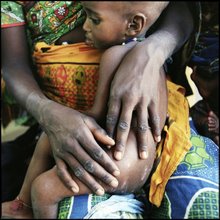FROM a Great Canadian and World Statesman
"A great gulf... has... opened between man's material advance and his social and moral progress, a gulf in which he may one day be lost if it is not closed or narrowed..."
Lester B Pearson
http://nobelprize.org/nobel_prizes/peace/laureates/1957/pearson-lecture.html
Saturday, 16 March 2013
BEATIFICATION & SAINTHOOD?: A CASE TO RECONSIDER IN THE 21ST CENTURY
PREAMBLE: On March 11, 2013, Argentine Cardinal Jorge Mario Bergoglio was elected pope. Son of an Italian immigrant, he is being celebrated as the first national from outside Europe to become pope in over a millennium. Also, he is the first from the ascetic Franciscan Order to be so installed, and will be known as Pope Francis after Saint Francis of Assisi.
It is widely hoped that he will lead the Catholic Church out of a contemporary wasteland of moral deficits, the most glaring being the sexual abuse of minors inflicted by priests in numerous countries. Rather than giving first priority to the victims, protecting the reputation of the church was the modus operandi in most instances – evasion of criminal responsibility by hiding behind “canon law”. This is the same archaic body of religious “law” that decrees that any bishop involved in ordination of women, and the women themselves if Catholic, will be excommunicated, and that proscribes contraception as not part of God’s plan, even though the dogma of “Go forth and multiply” (Genesis 9:7) is both inhumane and incompatible with a sustainable world. Add to this the revelations of financial fraud in the Vatican (central governing body of the Catholic Church), and the mess is there for all to see. What is unique is that the Vatican is upheld as a supreme arbiter of moral virtues that it seems increasingly unable itself to honour, or (in some instances) that have become untenable for thinking people everywhere.
One untenable position is to perpetuate into the 21st century the tradition of “sainthood”, a status recognized for having an exceptional degree of holiness, sanctity, and virtue in the eyes of God. Traditionally, this is bestowed on select individuals for their “miraculous” works. Clearly, one can respect the ancient practice because it was born in the pre-scientific era, when most people were illiterate and swallowed whole whatever the church decreed. We can even treasure its cultural value today as one does for other myths and legends, as well as works of art, music and architecture that religions generally have inspired. However, the appropriateness of recognizing new saints in the 21st century is highly questionable, especially if it perpetuates a culture in which the notion persists that Canon law is above contemporary Civil law and can defy objective evidence.
This month’s blog showcases a report extracted verbatim from the website of the Université de Montréal, authors cited, to whom belongs full credit. We do so as a way of asking whether the practice of beatification (third step towards sainthood), as illustrated by Mother Teresa, might be standing in the way of the church moving forward to full acceptance of a literate thinking world, and thereby impeding its good pastoral work in many local settings around the world.
Mother Teresa: anything but a saint...
Source: UdeMNouvelles March 1, 2013 http://www.nouvelles.umontreal.ca/udem-news/news/20130301-mother-teresa-anything-but-a-saint.html
The myth of altruism and generosity surrounding Mother Teresa is dispelled in a paper by Serge Larivée and Genevieve Chenard of University of Montreal's Department of Psychoeducation and Carole Sénéchal of the University of Ottawa's Faculty of Education. The paper will be published in the March issue of the journal Studies in Religion/Sciences religieuses and is an analysis of the published writings about Mother Teresa. Like the journalist and author Christopher Hitchens, who is amply quoted in their analysis, the researchers conclude that her hallowed image—which does not stand up to analysis of the facts—was constructed, and that her beatification was orchestrated by an effective media relations campaign.
“While looking for documentation on the phenomenon of altruism for a seminar on ethics, one of us stumbled upon the life and work of one of Catholic Church's most celebrated woman and now part of our collective imagination—Mother Teresa—whose real name was Agnes Gonxha,” says Professor Larivée, who led the research. “The description was so ecstatic that it piqued our curiosity and pushed us to research further."
As a result, the three researchers collected 502 documents on the life and work of Mother Teresa. After eliminating 195 duplicates, they consulted 287 documents to conduct their analysis, representing 96% of the literature on the founder of the Order of the Missionaries of Charity (OMC).
Facts debunk the myth of Mother Teresa
In their article, Serge Larivée and his colleagues also cite a number of problems not taken into account by the Vatican in Mother Teresa's beatification process, such as "her rather dubious way of caring for the sick, her questionable political contacts, her suspicious management of the enormous sums of money she received, and her overly dogmatic views regarding, in particular, abortion, contraception, and divorce."
The sick must suffer like Christ on the cross
At the time of her death, Mother Teresa had opened 517 missions welcoming the poor and sick in more than 100 countries. The missions have been described as "homes for the dying" by doctors visiting several of these establishments in Calcutta. Two-thirds of the people coming to these missions hoped to a find a doctor to treat them, while the other third lay dying without receiving appropriate care. The doctors observed a significant lack of hygiene, even unfit conditions, as well as a shortage of actual care, inadequate food, and no painkillers. The problem is not a lack of money—the Foundation created by Mother Teresa has raised hundreds of millions of dollars—but rather a particular conception of suffering and death: “There is something beautiful in seeing the poor accept their lot, to suffer it like Christ's Passion. The world gains much from their suffering," was her reply to criticism, cites the journalist Christopher Hitchens. Nevertheless, when Mother Teresa required palliative care, she received it in a modern American hospital.
Questionable politics and shadowy accounting
Mother Teresa was generous with her prayers but rather miserly with her foundation's millions when it came to humanity's suffering. During numerous floods in India or following the explosion of a pesticide plant in Bhopal, she offered numerous prayers and medallions of the Virgin Mary but no direct or monetary aid. On the other hand, she had no qualms about accepting the Legion of Honour and a grant from the Duvalier dictatorship in Haiti. Millions of dollars were transferred to the OMC's various bank accounts, but most of the accounts were kept secret, Larivée says. “Given the parsimonious management of Mother Theresa's works, one may ask where the millions of dollars for the poorest of the poor have gone?”
The grand media plan for holiness
Despite these disturbing facts, how did Mother Teresa succeed in building an image of holiness and infinite goodness? According to the three researchers, her meeting in London in 1968 with the BBC's Malcom Muggeridge, an anti-abortion journalist who shared her right-wing Catholic values, was crucial. Muggeridge decided to promote Teresa, who consequently discovered the power of mass media. In 1969, he made a eulogistic film of the missionary, promoting her by attributing to her the “first photographic miracle," when it should have been attributed to the new film stock being marketed by Kodak. Afterwards, Mother Teresa travelled throughout the world and received numerous awards, including the Nobel Peace Prize. In her acceptance speech, on the subject of Bosnian women who were raped by Serbs and now sought abortion, she said: “I feel the greatest destroyer of peace today is abortion, because it is a direct war, a direct killing—direct murder by the mother herself.”
Following her death, the Vatican decided to waive the usual five-year waiting period to open the beatification process. The miracle attributed to Mother Theresa was the healing of a woman, Monica Besra, who had been suffering from intense abdominal pain. The woman testified that she was cured after a medallion blessed by Mother Theresa was placed on her abdomen. Her doctors thought otherwise: the ovarian cyst and the tuberculosis from which she suffered were healed by the drugs they had given her. The Vatican, nevertheless, concluded that it was a miracle. Mother Teresa's popularity was such that she had become untouchable for the population, which had already declared her a saint. “What could be better than beatification followed by canonization of this model to revitalize the Church and inspire the faithful especially at a time when churches are empty and the Roman authority is in decline?” Larivée and his colleagues ask.
Positive effect of the Mother Teresa myth
Despite Mother Teresa's dubious way of caring for the sick by glorifying their suffering instead of relieving it, Serge Larivée and his colleagues point out the positive effect of the Mother Teresa myth: “If the extraordinary image of Mother Teresa conveyed in the collective imagination has encouraged humanitarian initiatives that are genuinely engaged with those crushed by poverty, we can only rejoice. It is likely that she has inspired many humanitarian workers whose actions have truly relieved the suffering of the destitute and addressed the causes of poverty and isolation without being extolled by the media. Nevertheless, the media coverage of Mother Theresa could have been a little more rigorous.”
About the study
The study was conducted by Serge Larivée, Department of psychoeducation, University of Montreal, Carole Sénéchal, Faculty of Education, University of Ottawa, and Geneviève Chénard, Department of psychoeducation, University of Montreal.
The printed version, available only in French, will be published in March 2013 in issue 42 of Studies in Religion / Sciences religieuses. This study received no specific funding.
*The University of Montreal is officially known as Université de Montréal.
On the Web :
• Official biography of Mother Teresa published by the Vatican:http://www.vatican.va/news_services/liturgy/saints/ns_lit_doc_20031019_madre-teresa_en.html
Media contact:
William Raillant-Clark
International Press Attaché
Université de Montréal
Tel: 514-343-7593
w.raillant-clark@umontreal.ca
Source: UdeMNouvelles March 1, 2013 http://www.nouvelles.umontreal.ca/udem-news/news/20130301-mother-teresa-anything-but-a-saint.html
Envoi: This choice of blog topic is intended to support freedom of expression, with the hope that the need for extensive reform in the Catholic church will indeed follow the appointment of a new leader in Pope Francis. It is not intended to diminish Catholicism as a faith.
As one practising Catholic recently wrote in the New York Times “no one launching an attack upon the papal elections, Vatican finances, sexism and the rest should think that they are attacking Catholicism per se. From my perspective, our Catholic Church is vibrant, helpful, intellectual, and working in so many ways to fulfill the message to love God and to love, and reach out to, one’s unknown neighbor.”
Reference: The New York Times. Op-Ed Contributor. Which Catholic Church? By Paul Kennedy. February 26, 2013 http://www.nytimes.com/2013/02/27/opinion/global/which-catholic-church.html?pagewanted=all.
And so we recognize that Catholicism itself is alive and well at local level in many countries, if not within its political hierarchy. We wish Pope Francis all the vision and strength he can call upon to address these issues, as surely will be needed to bring the church into the 21st century.
Postscript (extract from Wikipedia): Mother Teresa was the recipient of numerous honours including the 1979 Nobel Peace Prize. In late 2003, she was beatified, the third step toward possible sainthood, giving her the title "Blessed Teresa of Calcutta". A second miracle credited to Mother Teresa is required before she can be recognised as a saint by the Catholic Church. She was admired by many; in 1999, a poll of Americans ranked her first in Gallup's List of Most Widely Admired People of the 20th Century. However, she has also been criticized for failing to provide medical care or pain killers because she felt that suffering would bring people closer to Jesus, for misusing charitable monies, and for maintaining positive relationships with dictators.
INSPIRATIONAL WELCOME ............................... from T.S.Eliot's "Little Gidding"
If you came this way From the place you would come from... It would be the same at the end of the journey...
If you came, not knowing what you came for, It would be the same... And what you thought you came for Is only a shell, a husk of meaning... From which the purpose breaks only when it is fulfilled If at all.


























